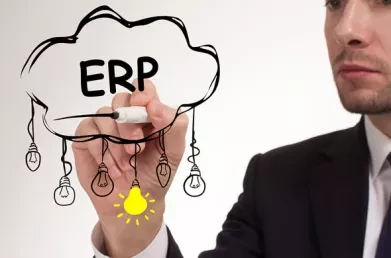ERP in Retail: What are the Key Requirements?
If you ask any knowledgeable buyer for the most important characteristic of a ‘retail’ ERP system, their response is more than likely to be speed. Speed is indeed fundamental but you will need to think seriously about the functionality also. Not all ERP systems will have the right functionality and, certainly, not all ERP systems will have the right functionality at the requisite speed.
Below are some of the key requirements for an ERP system in the Retail Sector. It is not a complete list by any means but it should give you a flavour of what to look for.

1. Speed & Flexibility at the Till
As stated above, this is fundamental. Your typical supermarkets, and indeed your corner shops, will want to scan each item quickly and allow various payment methods. That is expected as standard but some retail outlets (e.g., bookstores) will not have all items bar-coded and, thus, items have to be found quickly by description or item name. One ‘art-supplies’ client of ours wanted to speedily enter multiples of similarly described items onto a sale (e.g. when an arts student wanted to buy ten different colours of the same paint type, the legacy system forced the operator to go through a “find and select” ten times).
Another client in the building material supplies sector wanted the flexibility to allow more than one operator to work on the same till at the same time. For example, an operator may need to check a price of an item in the middle of order entry and will want to suspend the sale, (allowing another operator to complete a sales transaction) and return later to complete the order entry.
2. Fast Efficient Set-up & Maintenance of Items
In an environment where there may be numerous suppliers and large quantities of items, the system will need enhanced data maintenance functionality. Thankfully, some systems allow for importing of supplier files and automatic calculation of retail price (obviously according to shop specific rules). Other systems allow for setting of purchase and retail prices in advance (useful for shop sales or end of year price changes) and the better systems will keep a history of price changes so that users can see the effect of changes.
3. Accommodation of various Retail Pricing Arrangements
There are a multitude of pricing possibilities in the retail sector: volume and value discounts (if one buys over a certain amount); BOGOFs (buy one and get one free); “two-fors” (buy two items for a certain price); marking up or down from a supplier suggested retail price and so on.
Also, while most systems are set up for the scenario where customers are strictly retail and pay immediately for goods, there are certain retail environments where customers are treated as debtors. To accommodate this, systems need to incorporate a debtor’s ledger and the pricing system may also have to include customer and customer group discounts. I was once asked to find a system with functionality to cater for the scenario where repeat customers would only make themselves known after all the goods had been entered at the till and priced at the standard retail price instead of the customer’s special rate (you can imagine the pulling of hair and gnashing of teeth by the system programmers after that!)
4. Integration with the Back Office System
One of our clients in the food retail sector wanted the system to calculate the net margin in ‘real-time’ before setting the retail price for his lunch specials. This was a very specific requirement but it does demonstrate that till systems include some financial functionality but do not have the depth of most ERP systems. The reverse scenario is also true as some ERP systems would not work ‘speedily’ in a retail environment. Historically, ERP systems were built for the back office and retail systems were built for the counter. If your requirements are such that you need a best of breed for the front and for the back office, you must give considerable thought to the interfaces between both systems.
See also ERP VS Best of Breed: What You Need to Consider
5. Fundamental Software Requirements
Have you ever been told by a shop assistant that an item is out-of–stock but you will get a phone call when it arrives? You probably know from experience of “never getting that phone call” that some retail systems are obviously of no help in this regard. This may be regarded as a nice-to-have but there are some “must-haves”:
- Any modern retail system must have the flexibility (as standard) to cater for credit notes where credit could be provided at the original purchase price or at the current price of the item;
- Loyalty cards are now common practice but not all retail systems can handle these; in particular, multi-channel loyalty schemes can be an issue;
- Systems should also be able to accrue for vouchers and manage full and partial redemption of vouchers.
See also Stock Management in Retail: Everything You Need To Know
6. Fundamental Hardware Requirements
The most basic of till systems will have the capability for Floats, X and Z reads. Touch screens are now standard. However, modern systems (unfortunately) also require increased security where each operator transaction can be identified separately through various card, key or fob systems.
As stated above, this is only to give a flavour of the requirements. There are other specific requirements and I could have also discussed add-ons such as conversion of quotations to sale transactions and expansion to other sales channels such as e-commerce.
There are many and varying requirements but, if people in the retail sector take the time to find out what they want and what the systems out there can provide, they will find a best fit for their company, without having to resort to substantial customisation. It takes a lot of effort but it is worth it.
This blog was written by Martin Commins, Principal Consultant at Lumenia. If you would like further information on ERP System Strategy or on any other aspect of ERP please send an e-mail to Martin Commins.


